Look at the image above, the Chinese Spare Ribs that has to be tasted to believe.
Why?
If you regularly use herbs and spices like rosemary, thyme, black pepper and olive oil to make braised pork ribs, now think of replacing them with a plethora of Asian spices- cloves, scallion, star anise, cinnamon, sesame oil and soybean paste.
This Chinese Spare Ribs recipe is my favorite because the preparation is incredibly simple. Even though the braised spare ribs takes 3 hours to cook, it is mostly passive cooking, means you just let it braise without doing a thing. In fact, you need less than 15 minutes to prepare everything. You will be pleasantly surprised by the aromatic flavor as the result of the interplay of this oriental spices.
This Chinese Spare Ribs Recipe (香燜一支骨) has a set of flavor with universal appeal that accessible to almost every palate. If you can’t imagine how these Chinese pork ribs taste like, let’s cook up a storm by following this step-by-step guide. You will be amazed how tasty it is.
Note: This post may contain affiliate links. Please read my disclosure for more info. I may receive commissions for purchases made through links in this post.
This Chinese Spare Ribs that has to be tasted to be believed!
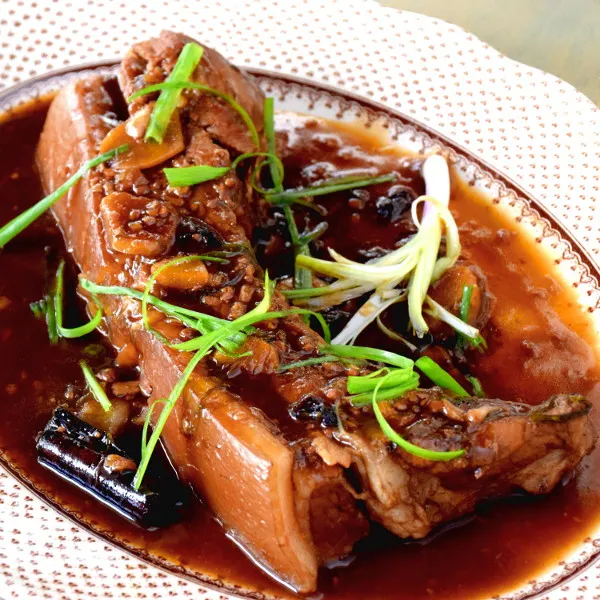
How to make Chinese Spare Ribs Recipe in 4 simple steps
Let’s take a look how to prepare this amazing dish in four simple steps.
Step 1- Blanch the pork ribs.
Prepare a pot of boiling water. Place the pork ribs in a saucepan or skillet, and make sure the amount of water is sufficient to submerge the entire rib. I use a wok since I do not have a skillet large enough for the ribs.
Bring the water to a boil. Wait for five minutes and then remove the ribs and drain.
OK. We are supposed to braise the pork ribs, not blanching it in water, right?
Blanching the pork rib is an essential pre-treatment before proceeding to braise. Some pork ribs may have a strong gamey taste, and blanching can effectively remove the unpleasant taste of the pork.
This process will not reduce the flavor since it takes only five minutes.
Step 2- Prepare the braising liquid.
The herbs, spices, and seasonings in the braising liquid define the complex and yet subtle flavor of the pork rib.
This step begins with adding two tablespoons of vegetable oil to the wok over medium heat.
Put your palm about two inches above the surface of the oil. If you can fill the heat from the oil, it is now hot enough to saute the herbs and spices.
Then add five slices of ginger, three cloves of garlic, two stalks of scallion, one star anise of about seven to ten star-points, and one stick of cinnamon, about 5 cm length. Saute the spices slowly over low heat until they turn aromatic.
Next, add 2 tablespoons of fermented soybean paste, 2 tablespoons of light soy sauce, 4 teaspoons of oyster sauce, 2 teaspoons of sugar, 1 teaspoon of sesame oil, 4 tablespoons of Shaoxing wine, and lastly 1500 ml of water.
Stir and mix well the liquid and wait until it is boiling.
Do you realize that there is no salt in the recipe?
The soybean paste, light soy sauce, and oyster sauce all contain salt, which will provide sufficient saltiness to the recipe. Bear in mind that the amount of salt in different brands of soybean paste, light soy sauce, and oyster sauce are not the same. Therefore, I always like to adjust the saltiness of the sauce right before serving. If you follow this recipe, the saltiness is joust right in most cases. But you can add additional salt and light soy sauce during the final adjustment of the flavor.
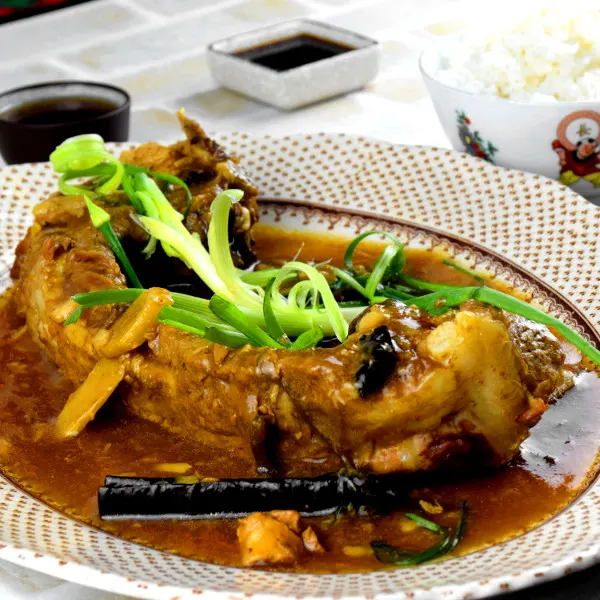
Step 3- braise the pork ribs
And now you have completed most of the work. Just place the spare rib in the skillet (or wok in my case) and start braising it over low heat with the lid on.
Now sit back and relax. Have your coffee break or pick up a storybook. All you need is to check the progress of the braise occasionally.
There are two common questions about braising. First, should I close the lid or leave it open? And the second question, how long should I braise the rib?
Here are a few tips to help you make sure that you get the flawless Chinese Spare Ribs.
- You can either leave the lid on or otherwise. If you cook without the lid, please monitor the level of water in the skillet regularly, as it will dry out pretty fast. The advantage of putting the lid on is that you do not need to check the amount of liquid often.
- Always use the lowest heat to cook. You can raise up the skillet a little by putting a steaming rack on top of the stove and place the skillet on it. Bear in mind that you are braising the rib for three hours. The meat will eventually be so soft that it just falls off from the bone.
- Since the rib is only partially submerged in the liquid, it is best to turn the spare ribs over occasionally to ensure even cooking.
- The actual duration of braising depends on the heat and whether it is covered. Generally, it takes about three hours, but you can stop short once the meat is tender and soft.
Step 4- Thicken the sauce
After three hours of braising, there is only one more step remain before serving – to make the umami-rich sauce to coat the pork ribs.
Check the amount of the braising liquid.
If it is too dry, add a bit of water and bring it to a boil again. Then add some cornstarch slurry to thicken the liquid to form a thick sauce. Sometimes the liquid is already thick enough as the result of the gelatin from the bone. In this case, you can just omit the cornstarch slurry. The goal is to form a thick sauce that will cling to the rib, that for sure will tantalize your taste buds.
Remove the spare rib from the saucepan, place it on a large plate. Pour the thick sauce over the rib. Garnish with scallion. Serve.
Final note
This recipe is easy to prepare. You can adjust the amount of each ingredient according to your preference, and it will still turn out to be outstanding. You can follow this recipe for the first time and make changes during your next attempt. Chinese Spare Ribs are best to serve with steamed white rice along with some leafy vegetable. Guarantee to make your belly rumbles!
Now it is your turn to cook. Leave your comments and questions below, and I’ll try to reply as soon as possible.
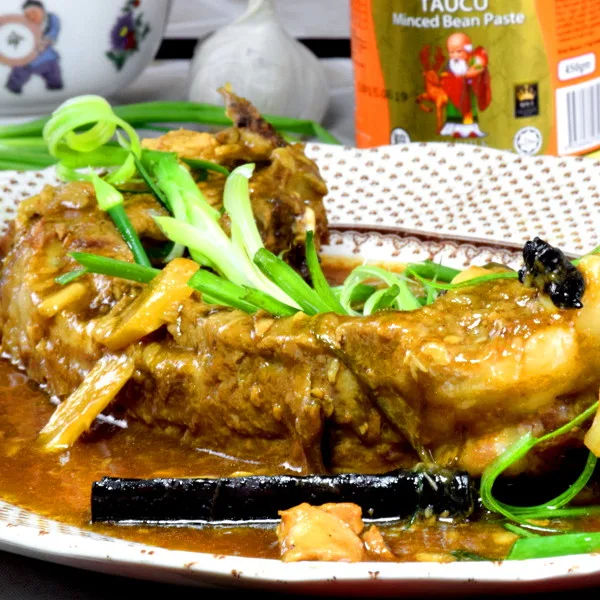
The Chinese Spare Ribs Recipe
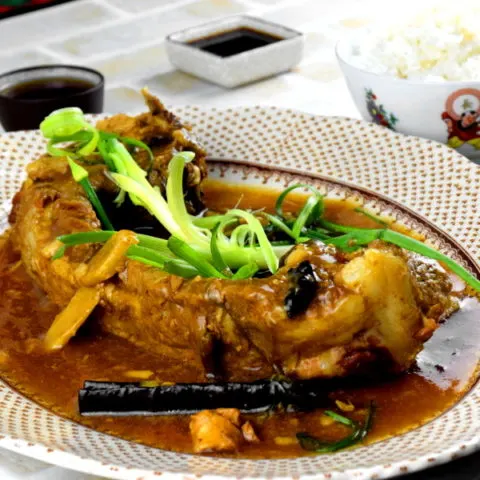
Chinese spare ribs recipe
A delicious Chinese style braised pork ribs that only take fifteen minutes to prepare.
Ingredients
Ingredients A
- 1 stick of meaty spare rib, about 600g
- 4 g cornflour, mix with 1 tablespoon of water
- Scallion to garnish
Ingredients B
- 30 ml vegetable oil
- 15 g ginger, cut into slices
- 15 g chopped garlic, whole clove
- 2 stalks of scallion, about 15g
- 1 star anise, (about 7 star-point)
- 1 stick cinnamon, about 5 cm length
Ingredients C
- 2 tablespoons fermented soybean paste
- 2 tablespoons light soy sauce
- 4 teaspoons oyster sauce
- 2 teaspoons sugar
- 1 teaspoon sesame oil
- 4 tablespoons Shaoxing wine
- 1500 ml water
Instructions
- Place the pork rib in a large skillet with boiling water, which is sufficient to cover the entire pork rib.
- Blanch for 5 minutes. Remove the pork rib and discard the water.
- Heat up the vegetable oil in a wok or saucepan, saute the ingredients in B until aromatic.
- Add ingredients C. Bring it to a boil.
- Place the spare rib in the boiling liquid. Reduce the heat and braise for 3 hours.
- Turn over the spare rib occasionally.
- After 3 hours, add the cornflour and water in INgredients A to thicken the braised liquid.
- Remove the spare ribs and place it on a serving plate.
- Pour the thickened sauce over the spare rib.
- Garnish with scallion.
Recommended Products
As an Amazon Associate and member of other affiliate programs, I earn from qualifying purchases.
Nutrition Information:
Yield: 1 Serving Size: spare rib (600g)Amount Per Serving: Calories: 2346Total Fat: 176gSaturated Fat: 45gTrans Fat: 2gUnsaturated Fat: 92gCholesterol: 485mgSodium: 4746mgCarbohydrates: 82gFiber: 4gSugar: 56gProtein: 102g
This data was provided and calculated by Nutritionix on 5/25/2019


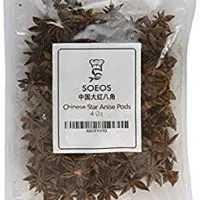
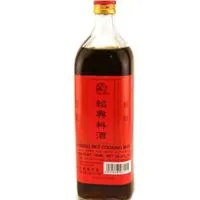
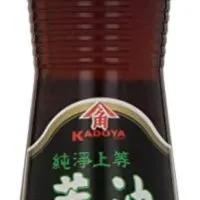
Pork knuckle 橫財就手 - Chinese New Year recipe
Tuesday 28th of January 2025
[…] Chinese spareribs. This pork knuckle recipe is a simplified version, prepared with similar herbs and spices. It’s the perfect choice to try different herbs from your regular rosemary, thyme, black pepper, and olive oil. […]
Agatha Yong
Sunday 10th of January 2021
Wow! This dish looks so appetising. It looks simple and easy to cook. Moreover, the ingredients are easily available locally. I will try . How about cooking soft pork ribs with this receipe? I guess the timing should be shorter. Ya?
KP Kwan
Sunday 10th of January 2021
I suggest using the same recipe but reduce the time of cooking for short pork ribs.
Fred
Friday 4th of September 2020
Hi KP,
The fermented soy bean paste is that the salty paste which is also called taucu or tauchu in other parts of Asia?
I also noticed that you braise the pork ribs for a very long time (3 hours), where other recipes braise pork ribs for a much shorter time. Is that because you slow cook them on very low heat to make the ribs extra tender?
Thank you.
KP Kwan
Saturday 5th of September 2020
Hi Fred, Yes. It is called taucu in certain places. That is what I used. As for the braising, I use a gas stove but over a very small flame. That is why the soft will not become tough. The duration is only for your reference as the best way is to do a taste test to check the doneness. KP Kwan
APKun
Wednesday 22nd of April 2020
We have celiac in our family and can't do soy sauce because of the gluten. Do you think it would work to add molasses to Tamari?
KP Kwan
Thursday 23rd of April 2020
You can use Tamari to replace soy sauce.
Medadvicees.Com
Wednesday 25th of March 2020
Wowza! This is amazing. Thanks for tinkering with the recipe and making it your own. Moreover, you’ve shared your adjustments and I’m thrilled to bits. This is what community cooking is about. Would this recipe work with back ribs? I bought some (on sale) the other day and then saw this article. And just to make it even more bizarre, I'm hoping I can make this with back ribs in my Instant Pot.
KP Kwan
Wednesday 25th of March 2020
Should be okay with any ribs for this recipe. I have not tried with instant pot, but it should work just as good.